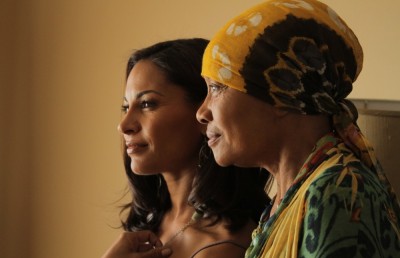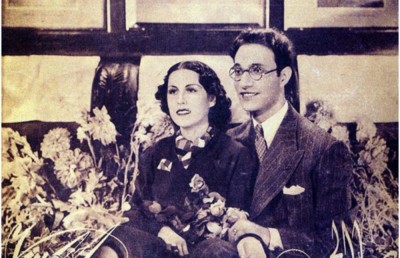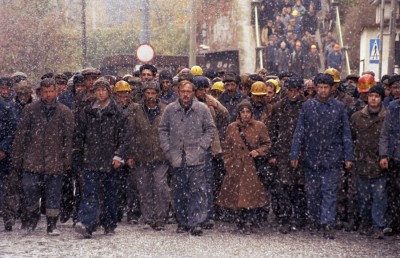On African-American Women in Film, in Eve’s Bayou, For Colored Girls, The Help, and Love & Basketball
How many films assume and respect the independence, intelligence and integrity of African-Americans?
_1000_420_90_c1.jpg)
Diahann Carroll was Myrt in Otto Preminger’s Carmen Jones (1954) starring Dorothy Dandridge and Harry Belafonte, and Diahann Carroll starred with Sidney Poitier, Paul Newman, and Joanne Woodward in Martin Ritt’s Paris Blues (1961), and she played a working mother, the title character, opposite James Earl Jones in Claudine (1974), an honest, intelligent, and moving film, for which Carroll, directed by John Berry (Boesman & Lena), received a nomination for an Academy Award, and later Carroll was featured in Robert Townsend’s musical drama The Five Heartbeats (1991) and Kasi Lemmons’ wonderful film Eve’s Bayou (1997). Diahann Carroll, a singer and author as well as actress, has been, of course, in other films, such as Hurry Sundown (1967) and The Split (1968); and it is possible that she will be seen soon in a film by Tina Gordon Chism. Diahann Carroll, a beautiful woman and gifted actress, a unique presence, is yet, very strangely, not one of the first names that come to mind when one thinks of a movie star, even of an African-American movie star. It is an example of the bizarre status of an African-American artist and entertainer: one does significant work and it has difficulty fully penetrating consciousness. The attention and energy of the culture are often focused elsewhere; and for that reason it can be easy to forget the diverse, entertaining, and valuable work featuring and directed by African-Americans, such as The Best Man, Body and Soul, Boomerang, Car Wash, The Caveman’s Valentine, Chameleon Street, Cooley High, Cotton Comes to Harlem, Daughters of the Dust, Devil in a Blue Dress, Ganja & Hess, Get on the Bus, Hollywood Shuffle, Killer of Sheep, The Learning Tree, Losing Ground, Love & Basketball, Love Jones, Mahogany, New Jack City, A Rage in Harlem, The Secret Life of Bees, She’s Gotta Have It, Sidewalk Stories, The Spook Who Sat by the Door, To Sleep with Anger, Training Day, Undercover Brother, Uptown Saturday Night, and Watermelon Man. In Kasi Lemmons’ film Eve’s Bayou, a work about family, love, and sex, about faith and superstition, about vision and blindness, about secrets and revelations, Diahann Carroll plays Elzora, a fortune teller, a voodoo practitioner; and in the role she has moments of comedy, moral censure, outrage, and horror.
In Eve’s Bayou, Diahann Carroll as Elzora is an important element in the story, though the main part of the story is about a sensitive, temperamental little girl named Eve (Jurnee Smollett), who is envious of the favoritism her father shows her elder sister and the favoritism her mother shows her younger brother (Eve seems the favorite of her aunt and uncle, Mozelle and Harry). Eve’s father Louis Batiste is a prominent doctor in Louisiana’s black French-speaking community and he has a roving eye for women, an inclination that subverts the fidelity of his marriage to Roz and the way his daughters Cisely and Eve see him. The father is seen as someone who may leave, as someone who has to be seduced for the maintenance of interest. When the film begins, a family party is in progress, and the father dances with a sensual married woman whose professor husband is in attendance this night but whom is often away from home when he is teaching. The heated nature of the father’s dance with the married woman is a promise of sex and trouble, a dangerous promise. As it happens, Eve leaves the house when her father dances with her sister Cisely (Meagan Good), and Eve goes into the wine shed and falls asleep, and wakes to find her father embracing the married woman he had been dancing with. Yet, it is not until the father’s response to his older daughter is questioned that the full implications of his perpetually seductive behavior is clear; and Eve, believing the worst, seeks vengeance, and goes to the witch Elzora for help.
The little girl Eve is charming but she is formidable: we have seen how, in response to her mother’s favoritism, Eve, knowing her little brother’s boyish greed, tricks her little brother into eating a bunch of chocolate-covered beans; we have seen her direct questioning of her father; we have observed her premonition of her uncle’s death, suggesting that she shares the psychic gifts of her aunt and of Elzora; and we saw Eve take a pineapple she thought was priced too high; and so the rage to punish her father is simply a natural, though worse, acceleration of her consciousness and will. Yet, the other females in the film are formidable too: very obviously, the sophisticated Roz (Lynn Whitfield), the mother who insists her children will remain in the house while Roz fears the prophecy of harm from outside, and who calls her husband to account; and the doctor’s sister Mozelle (Debbi Morgan) who can intuit the states and futures of others but not her own, and who acts as a warning mentor for Eve; and also remarkable are Eve’s critical, forceful Creole grandmother, as well as the sexy women in the town who demand the doctor’s professional and personal services. The doctor (Samuel Jackson) and the professor (Roger Guenveur Smith) are responding to volatile forces; they believe themselves men in control, but in many ways they are influenced beyond their conscious intentions—which does not mean that they lack force or effect: certainly, the two men affect each other lives, and that of their families, in a story rooted in Louisiana’s Creole culture and shaped by the perceptions of sensitive women.
One of the best scenes in Eve’s Bayou, written and directed by Kasi Lemmons, is of two beautiful women, Roz and Mozelle, on a country road walking and talking, thoughtful, wary, amused, about their expectations of love and life and their increased understanding. It is one of the scenes that invite one into a depth that is at once foreign and familiar. It can seem an excess of partisanship to make much of what it means to bring to bear the participation and sensibilities of African-American women in film, but when one considers the recent reception of Tyler Perry’s For Colored Girls and Tate Taylor’s The Help, the motivation, the justification, is affirmed. Ntozake Shange’s For Colored Girls Who Have Considered Suicide/When the Rainbow is Enough (Enuf) is a choreopoem, a theater-dance piece, a play, that I first read decades ago, appreciating its presentation of the complexities and difficulties of some black women’s lives that were only beginning to be spoken of in the prose fictions and poetry of such writers as Toni Morrison, Alice Walker, and Audre Lorde. While some people read the Ntozake Shange work as an attack on black men, I did not see it as any more of an attack on men than Jane Eyre or Pride and Prejudice, particular stories in which the facts and vulnerabilities of women’s lives were expressed, explained, and explored. I enjoyed the public television presentation of the play; and, decades later, when I heard that a cinema version was going to open I hoped to see it. The film For Colored Girls (2010) received very mixed reviews—some critics called it blunt and melodramatic—but I appreciated the range of characters and situations, and the charm and intensity of the performances by actresses such as Kimberly Elise, Anika Noni Rose, Whoopie Goldberg, and Phylicia Rashad with the black British actress Thandie Newton, and actors such as Omari Hardwick and Hill Harper. One would have to think hard to identify other films that attempted to present as much of African-American experience. No conscious person would number Tate Taylor’s The Help (2011) among them: that movie, quite warmly received by many critics and the general public, focused on a white girl who decides to interview black American southern maids during the age of discrimination and segregation—the premise alone suggests arrogance and ignorance as well as imagination and sympathy, and much of the execution is sentimental, though Viola Davis and Octavia Spencer as two of the maids do their admirable best. Certain members of the public have no problem at all seeing blacks in silent, subservient positions, or accepting a white girl as their savior; and that is the basic situation there. The difference between For Colored Girls and The Help is akin to the difference between Spike Lee’s Do the Right Thing and Bruce Beresford’s Driving Miss Daisy, two films that came out in 1989, the former, focused on class, race, and sex in a Brooklyn neighborhood, receiving worried notices from critics, and the latter, about the relationship of an elderly bourgeois Jew and her black male driver, winning praise—with many film connoisseurs now, decades later, considering Spike Lee’s contentious and rough film a classic. It is impossible not to think of how few films there actually are about the civil rights movement, and about black civil rights activists and intellectuals. How many films assume and respect the independence, intelligence, and integrity of African-Americans? The question itself should be a fundamental critical standard when considering works featuring African-Americans.
In For Colored Girls Janet Jackson plays a glamorous magazine editor with a bisexual husband whose desire for men is becoming stronger, and an office assistant (Kimberly Elise) who has a disturbed military veteran husband whose illness threatens the assistant and her children; and both women, creative and respected for their work, but with blind spots or weaknesses in terms of how they manage their personal lives, learn in crisis the limits of what they can take responsibility for and they also rediscover their own spiritual strength and worth, as do the other women in the film. In The Help, Viola Davis plays a woman without significant education or opportunity but with a genuine inclination to write and express her experience, a white girl’s attention giving her permission; however, Octavia Spencer, who has received the commercial film industry’s highest recognition for this film, plays a character who works for a white woman so incompetent that the Spencer maid’s own kindness and household skills seem heroic, yet a character, a maid, who achieves revenge against a former employer through crude, deceptive, and malicious methods—is that a coherent character, or a manipulative fictional construct? Which of the two films is likely to be best remembered, most highly regarded?
There have been many works featuring African-Americans, more than most of us remember, and, while they offer differing depths of entertainment and inspire differing levels of respect, not all could meet the most exacting standard: just think of The Emperor Jones, The Blood of Jesus, Cabin in the Sky, Island in the Sun, Anna Lucasta, The Defiant Ones, Lilies of the Field, Nothing But A Man, For Love of Ivy, Lady Sings the Blues, Trading Places, A Soldier’s Story, Hollywood Shuffle, Bird, Glory, Waiting to Exhale, and Soul Food. One can appreciate the talented performers in Cabin in the Sky but lament its very simple story of good and evil, or be perplexed at why a strong and vibrant actor such as Sidney Poitier was required to be so angelic so often, whether in The Defiant Ones or Lilies of the Field; and one can admire the honest torment in Forest Whitaker’s incarnation of Charlie Parker in Bird but regret that instead of a musical genius we have one more portrait of an addict; and it is easy to delight in the vivacious personalities of the women—Angela Bassett and Whitney Houston among them—in Waiting to Exhale but to shake one’s head in despair at the foolishness of the relationships on view in the motion picture. That is why one holds very dear the works one likes and respects, such as Chameleon Street, Daughters of the Dust, Ganja & Hess, Eve’s Bayou, Losing Ground, and Sidewalk Stories, all films featuring and directed by African-Americans. Love & Basketball is one movie that deserves another look.
One of the most pleasing things about Gina Prince-Bythewood’s Love & Basketball (2000) is that it actually takes on some very significant issues, but does it in a way that seems natural: what it means to be a girl, the value of love, and the demands of marriage can be found in its story of two young people, a boy and a girl, who meet when very young, are neighbors, sports competitors, friends, and, finally, lovers. The girl in the film, played by Sanaa Lathan, loves basketball and is often better than the boys, and she and her neighbor, played by Omar Epps, are both high school players who want the game to be their ticket to college and a good life. Watch Sanaa Lathan—in nearly every scene, her eyes contain the truth. In the film, her mother (Alfre Woodard), a quite feminine homemaker, worries that her daughter is not girly enough, and does not appreciate her own beauty, while her father (Henry Lennix) cheers her on. The character that Omar Epps plays has a father (Dennis Haysbert) who had been a basketball star and who still enjoys some of the perks, such as casual sex, causing a conflict at home with the wife and mother, an earthy, tough woman with a broken heart who survives into happiness (Debbi Morgan, who was featured in Eve’s Bayou). What will come first for the two young lovers played by Sanaa Lathan and Omar Epps, the game or each other? How long can a basketball career last? Love & Basketball tells its story with methodical detail and logic; and, for that reason, it can seem unremarkable at first, until one realizes that the film is not depending on shallow comedy, political rhetoric, or sexual exploitation for any of its power. It actually respects its characters—and the viewing audience. It is a film about individuality—its pleasures and its responsibilities, and about what can happen when two individuals meet: respect and love. It, like Eve’s Bayou, is the kind of work that inspires other creations.
(Article submitted on April 2012)





_400_258_90_s_c1.jpg)







